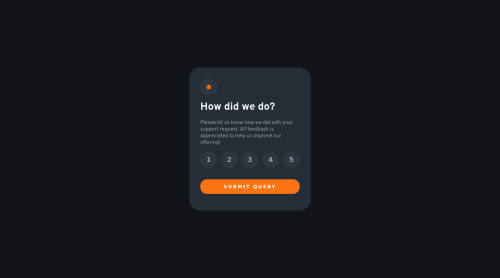Interactive rating component solution

Solution retrospective
Hello guys,
This my solution for Interactive rating component. I'm still struggling with JavaScript because I'm having a hard time to write simple codes. 😅 I watched some tutorials and courses, I fully understand the theory but when I'm starting to build some simple project I'm still struggling with it. I do know the usage of each tools but I don't know how to apply it fluently. 🥲
Thanks guys in advance for any feedback, tips and advice. 😀
Please log in to post a comment
Log in with GitHubCommunity feedback
- @aweliego
Hi John,
Well, from what I can see your code looks very neat, DRY and accessible, so well done! Regarding what you mentioned about struggling to write 'simple code': totally normal when you're starting out. I would say, don't worry about your code looking very efficient and DRY at the beginning, just focus on making the app work. Once you have that done, you can focus on refactoring and it should be easier then to see what you can bundle together or separate into different functions etc. It takes a lot of trial and error and there are also so many ways you could have built this app with vanilla JS, there's not just one right way to do it. Anyway keep at it, the more practice the easier you will find it to get into the implementation of the features :)
Nice that you used Sass (you should add it to your readme!) and I actually thought it was quite creative to increment the index of the score by 1 to get the right value. Also great that you thought of the disabled attribute for the submit button.
Design-wise, your solution looks a bit more 'compact' than the original, I would perhaps add some spacing/padding.
Regarding your JS, just two small comments:
- There's a bit of a mix of ES6 and older syntax in your code, I would standardise everything to arrow functions
- Instead of naming your variable rateBTN, I would name it rateBtns - it's best practice to use camelCase and since this refers to multiple buttons, it would make your code more readable to make it plural :)
Happy coding!
Marked as helpful
Join our Discord community
Join thousands of Frontend Mentor community members taking the challenges, sharing resources, helping each other, and chatting about all things front-end!
Join our Discord